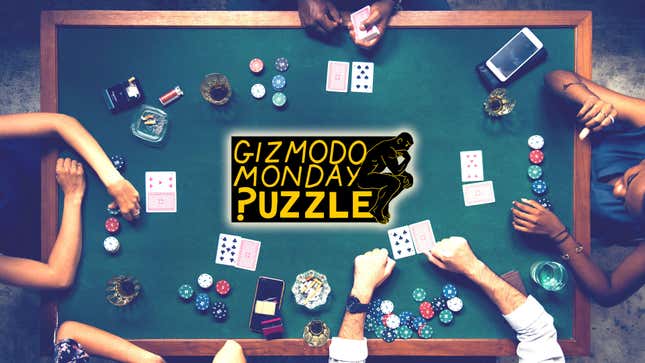
If you could see your opponent’s cards in poker, could you always clear them out? Game theorists draw a distinction between games with perfect information and games with imperfect information. Poker is a classic example of the latter category because players don’t know each other’s cards. Chess and tic-tac-toe, on the other hand, have perfect information because both players know everything that can be known about the game state.
I’m sure the distinction makes sense for theoretical analysis of games, but as a chess player, it always seemed off to me. The subjective experience of playing a long-form chess game feels like anything but possessing perfect information. On the contrary, it too often feels like wading through a mucky mire, groping around in the sludge for a foothold. Sure, the game doesn’t conceal information, but the limits of your brain do. For one, most humans cannot consistently look 10 moves ahead. But even if you could, you then need to evaluate each potential path to determine which ones benefit you most, a skill that even grandmasters haven’t perfected.
Chess even has a concept of bluffing. You can play a move that appears dangerous when in fact you know it doesn’t really work against perfect play. Your opponent may worry that you see something they don’t and play an overly cautious response.
So perfect information does not imply that decisions come easy. In this week’s puzzle we’ll demonstrate this lesson by considering a perfect information variant of poker. Can you play your cards right when they’re face up?
Did you miss last week’s puzzle? Check it out here, and find its solution at the bottom of today’s article. Be careful not to read too far ahead if you haven’t solved last week’s yet!
Puzzle #37: Transparent Poker
You and I will play a variant of poker. We will spread out the entire deck of 52 cards face up. You will pick any five cards you want, and then I will pick any five cards I want from the remaining deck. Then you have a chance to discard any number of cards you want from your hand (including discarding no cards), place them permanently out of the game, and replace them with any cards of your choice from the remaining deck. I then get to do the same. Whoever has the best five-card poker hand after the replacements wins. What cards should you pick on your first turn to guarantee that you win the game? If we end with the same hand, then I win.
The puzzle has more than one solution, but one stands out as the most natural. As a bonus, what is the worst five-card poker hand that you can start with to still guarantee a win? Find the ranking of poker hands here if you need a refresher.
I’ll be back next Monday with the solution and a new puzzle. Do you know a cool puzzle that you think should be featured here? Message me on X @JackPMurtagh or email me at gizmodopuzzle@gmail.com
Solution to Puzzle #36: April Fools
You all showed me last week that you’re no fools. I’ll confess my prank at the top. The fifth puzzle is an infamous unsolved math problem known as the Collatz conjecture. Part of the reason for its fame is how simple the problem appears at first blush. Apparently the problem has a 120 million yen bounty on it, which equals about $790,000, so the cash prize was not an empty offer (consider the extra $40,000 my finder’s fee). I hope none of you spent too much time on this, but I did delight in being called a “sly fox” and a “magnificent bastard.” I’m never gonna let you down again…
Shout-out to Meng Wang for seeing through the gimmicks in the other four puzzles and extra nerd points for your Fermat’s Last Theorem joke (Meng wrote on puzzle five, “I have discovered a truly marvelous proof of this, which this comment textbox is too narrow to contain.”)
1. A rope ladder hangs over the edge of a ship. The ladder is 20 feet long, and the rungs are each 1 foot apart. The bottom rung just barely grazes the water. The ocean tide rises 3 inches per hour. How much time will pass before the bottom nine rungs of the ladder are submerged under water?
The ladder is attached to the ship, so when the tide rises the ladder rises with the ship. The tide level will not change the number of submerged rungs.
2. What’s worth more, a gallon of nickels or half a gallon of dimes?
The dimes are worth more. One of the most common trick question brainteasers is: what weighs more, a pound of feathers or a pound of bricks? Answer: they both weigh a pound. I hoped some of you would reflexively say the nickels and dimes would have the same value. If nickels and dimes were the same size, this would be the case, but dimes are smaller than nickels, allowing you to pack more of them into the same volume.
3. A man leaves home and takes three left turns. When he arrives back at home he sees two men wearing masks. Who are these men?
The catcher and the umpire. Home refers to home base on a baseball diamond. The runner took three left turns as he ran the bases for a home run.
4. You meet two girls named Chloe Smith and Zoe Smith. They look alike and you ask if they’re twins. They say “No, but we have the same parents and we were born on the same day of the same month of the same year.” How is this possible?
The girls are triplets.